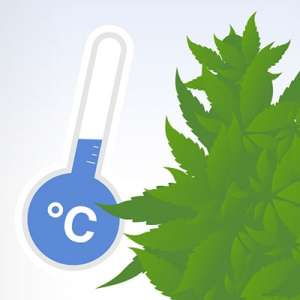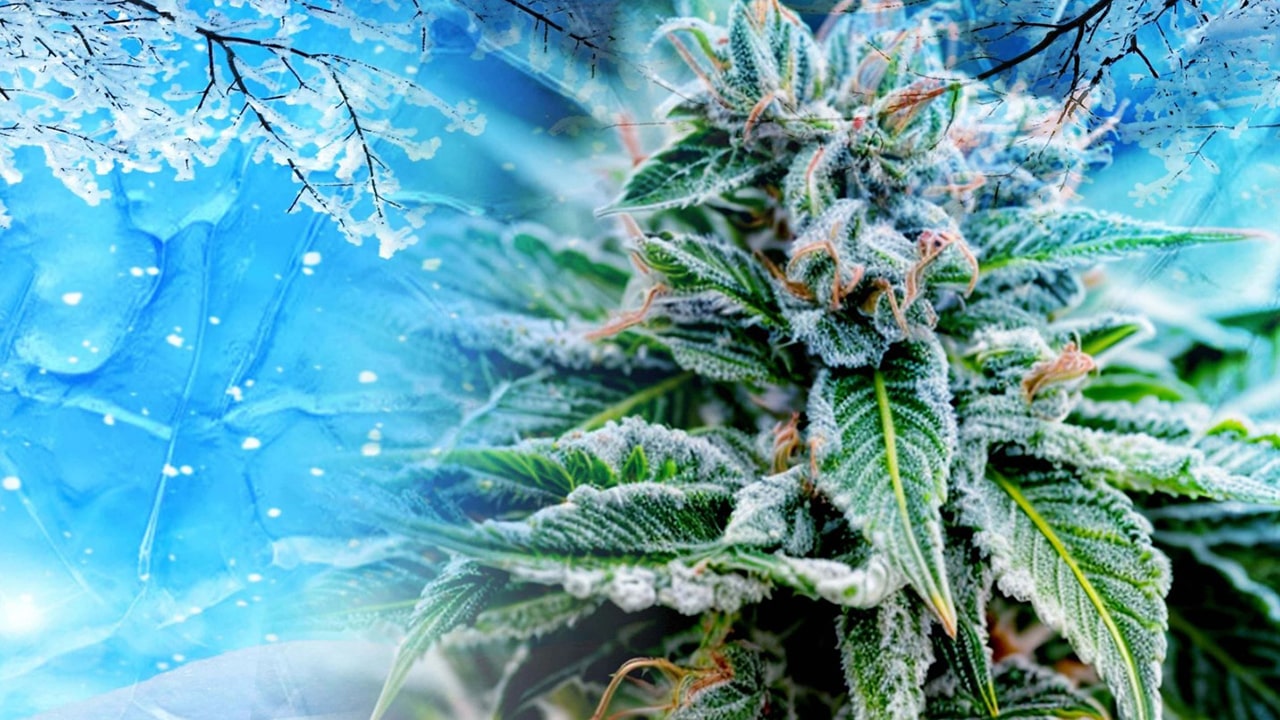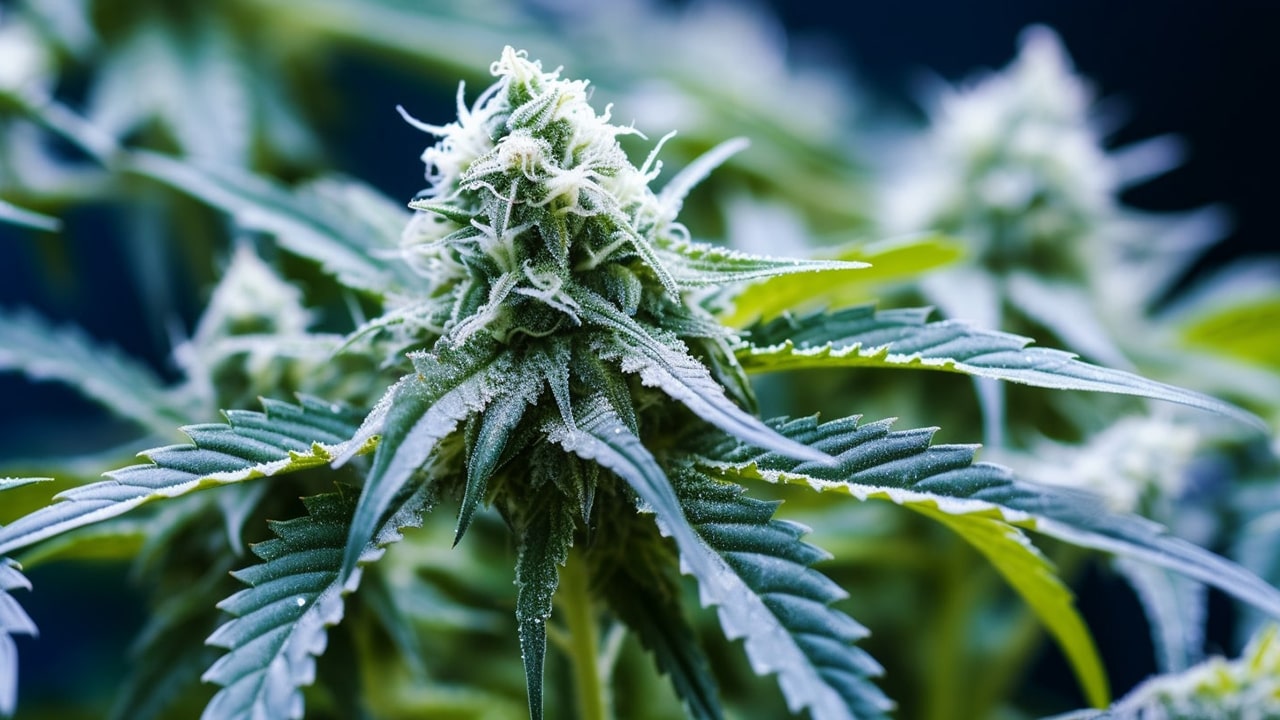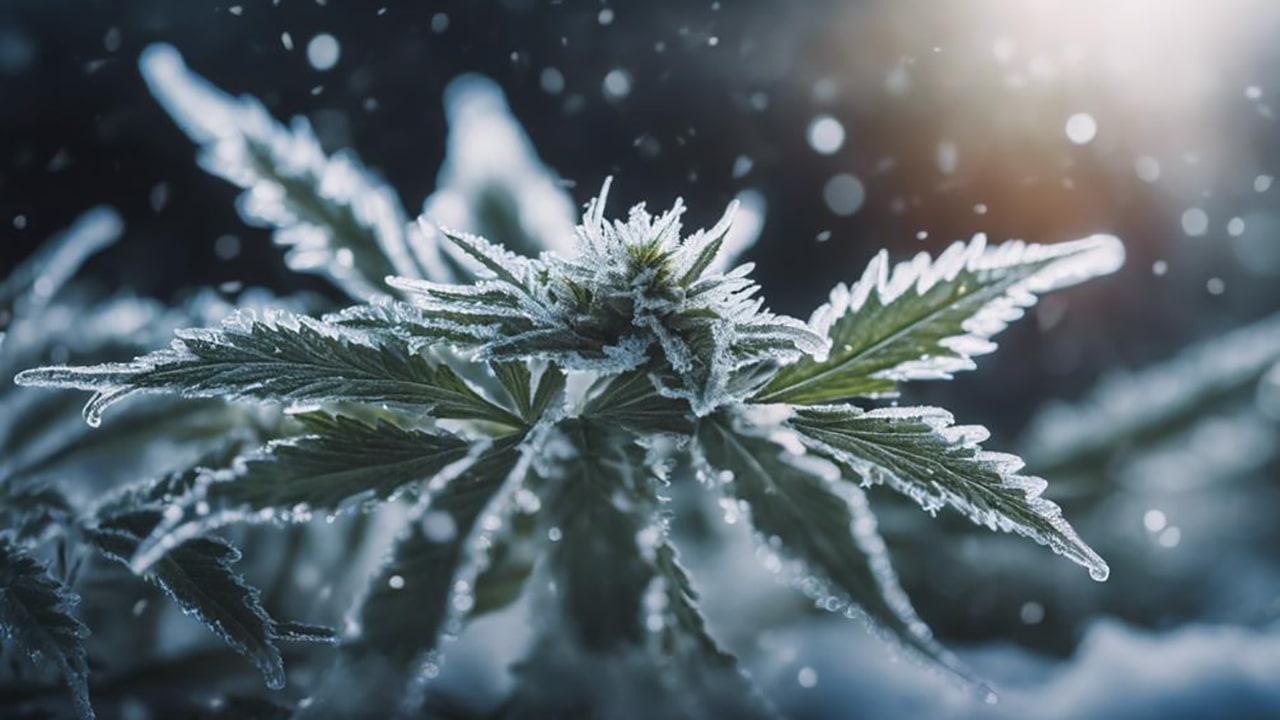- Blog
- Cannabis and low temperatures
Cannabis and low temperatures
Cannabis and low temperatures

How low temperatures affect cannabis
Cannabis, whether sativa, indica or hybrids, is a plant capable of surviving in a variety of climates. However, low temperatures can both stunt the growth of the plants and significantly affect their yield and quality.
Physiological changes in the plant
When the temperature drops below 15°C, photosynthesis slows down. This is because the enzymes responsible for converting light into energy are less active in the cold. As a result, the plant may look sluggish and develop more slowly.
Low temperatures also impair the absorption of water and nutrients. Roots become less active, resulting in a deficiency of essential elements such as nitrogen, phosphorus and potassium. This can manifest itself in yellowing or wilting leaves, as well as a reduction in the overall yield of the crop.
Effects on different types of cannabis
Sativa plants originating from warm regions such as equatorial zones are less tolerant of low temperatures. They are used to long warm days and humid climates. When cold, sativa can become stressed, which translates into slower growth and reduced flower quality.
Indica, on the other hand, has a greater tolerance to cold conditions, as its origin is linked to regions with harsher climates, such as the Hindu Kush Mountains. Indica's broad leaves help it capture light effectively even in cooler weather conditions, while its compact structure makes it less susceptible to wind and cold.
Hybrid varieties are a blend of sativa and indica genetics, allowing them to combine the best traits of both species. Many modern hybrids are specifically adapted to cold temperatures. This makes them ideal for regions with cold nights or a short summer season.
Positive aspects of low temperatures
Interestingly, moderate cold can have a positive effect on some cannabis characteristics. For example:
• Color enhancement: low temperatures stimulate the production of anthocyanins, pigments that give the plant purple, blue and red hues. This makes the flowers more visually appealing.
• Increased resin quality: cold can cause the plant to produce more trichomes to protect itself. This can increase the concentration of cannabinoids and terpenes, improving flavor and effects.
The dangers of cold weather for cannabis
Despite the possible positive aspects, severe or prolonged cold can be dangerous:
• Freezing of plant tissues leads to their damage and loss of viability.
• Resistance to diseases and pests decreases as the plant's immune system is weakened.
• Bud formation may slow down or stop completely, which is especially critical for photoperiod varieties such as feminized sativas and indices.

Autoflowering and feminized varieties in cold conditions
Low temperatures are a challenge for many cannabis varieties, but modern autoflowering and feminized varieties offer opportunities for successful cultivation even in harsh climates. Their features and advantages minimize the negative effects of cold weather.
Autoflowering varieties: versatility and sustainability
Autoflowering cannabis varieties derived from Ruderalis genetics are ideal for grooving in regions with short summers and cold nights. Their key advantages in cold conditions are:
• Autoflowering plants complete their growth cycle in just 8-12 weeks. This allows you to harvest before the onset of severe cold weather or the first frost.
• Autoflowering varieties begin to bloom regardless of the length of daylight hours. This is important in the conditions of the autumn reduction of daylight hours, typical for northern regions.
• The small size of autoflowers makes them less vulnerable to cold winds. Plants are easier to shelter or move to a greenhouse if temperatures drop significantly.
• Ruderalis genetics provide autoflowers with increased resistance to extreme conditions, including low temperatures. This makes them a popular choice among novice cultivators and those who grow cannabis outdoors (outdoors).
Feminized varieties: stable and high quality yields
Feminized varieties have been developed to guarantee the production of female plants, eliminating the risk of male plants pollinating the crop. They also have their own characteristics in cold conditions.
• Modern feminized hybrids are often developed with cold tolerance in mind. Such varieties can withstand night frosts and continue to grow at moderate daytime temperatures.
• Feminized plants, unlike autoflowers, require a photoperiod to initiate flowering. This makes them suitable for grooving in greenhouses or growboxes where temperature conditions can be controlled. In the open ground, they should preferably be grooving in locations with a warm summer season and avoid planting in late fall.
• Despite possible difficulties, feminized varieties often yield more abundant crops and have a high THC content. To increase cold tolerance, it is recommended to choose varieties whose genetics are dominated by indica, as it is more hardy in low temperature conditions.

Diseases caused by cold conditions
Low temperatures create stressful conditions for cannabis, which weakens its immunity and makes it more susceptible to various diseases. One of the most common problems is the development of mold and fungal infections. Cold and humid climates favor gray mold (Botrytis), which infects buds and causes them to rot. powdery mildew is another common problem, appearing as a white patina on the leaves, which reduces their ability to photosynthesize. To avoid these diseases, it is important to provide good ventilation, moderate watering and use organic fungicides.
Root rot also often occurs at low temperatures, especially in poorly drained soil. Constant moisture provokes root rot, which leads to wilting of plants and reduced yields. Characteristic signs of root rot are yellowing and wilting of leaves, as well as an unpleasant odor from the soil. To prevent this problem, it is recommended to use well-drained substrates and avoid overwatering.
Cold can slow the growth of cannabis and damage its cells. At temperatures below 10 °C, leaves often become deformed, brown around the edges or completely discolored. Such conditions have a negative effect on the overall condition of the plant, reducing its yield. To minimize stress, protect the plants from sudden temperature changes and provide warmth to the root zone with mulch.
In cold temperatures, cannabis becomes vulnerable to viral and bacterial infections. These pathogens penetrate the weakened plant and cause wilting and stunted growth. Cold also affects nitrogen assimilation, leading to nitrogen starvation. In this case, the leaves turn yellow, and the growth of the plant is significantly slowed down. Maintaining an optimal temperature regime and using a balanced fertilizer can help prevent such problems.
In general, cold climates require extra attention to the care of cannabis. Measures taken in advance, such as protection from dampness and the use of resistant varieties, will help to avoid most diseases and keep the plants healthy.
